Quartzy: the contact high edition
Happy Friday!

Happy Friday!
I’m Johnny Simon, Quartz’s New York-based photo editor. This week took me back to high school, when piles of music magazines filled my bedroom and I spent a lot of time surrounded by the distinctive smell of darkroom chemicals.
Those of you raised in the era of digital photos may not know what a contact sheet is, but for photographers in the age of film, there was nothing as exciting or stressful. A print of all the images on a roll of film, it showcased an artists’s process and progression, but it also showed all the glitches and failures, outtakes, and goofy moments of a photo shoot.
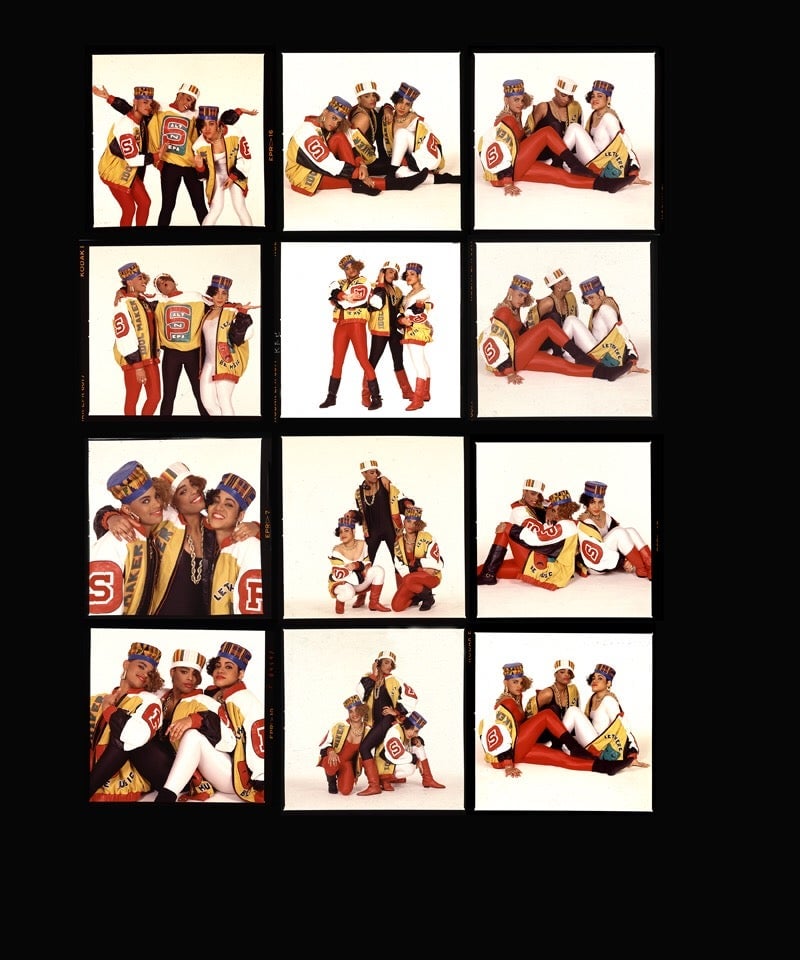
A new exhibit uses contact sheets to take a nuanced look at both photographer and subject. “CONTACT HIGH: A Visual History of Hip Hop,” opens at the Annenberg Space for Photography in Los Angeles today. It celebrates the work of the genre’s most acclaimed photographers, from Jamel Shabazz’s potent street shots of hip-hop’s early tastemakers, to studio portraits of stars from Salt-N-Pepa to Slick Rick.
“Contact sheets are like looking into a photographer’s private world,” says Vikki Tobak, the show’s curator, who originally published these photos in a book of the same name. (Hip-hop-lovers among you, take note.) “It’s a rare glimpse into their process and allows viewers to see so much more than the final product.”
The sheets behind Barron Claiborne’s famous portrait of The Notorious B.I.G. are one moving example. The iconic photo of the young rapper (at left, below), taken in March of 1997 just three days before he was murdered, has since been repurposed and remixed into countless building murals and t-shirts. It shows the young rapper stone-faced, his brow wrinkled in a frown, as if contemplating his imminent tragic end. But one of the last images on Claiborne’s contact sheet also shows Biggie letting his guard down and cracking a smile.
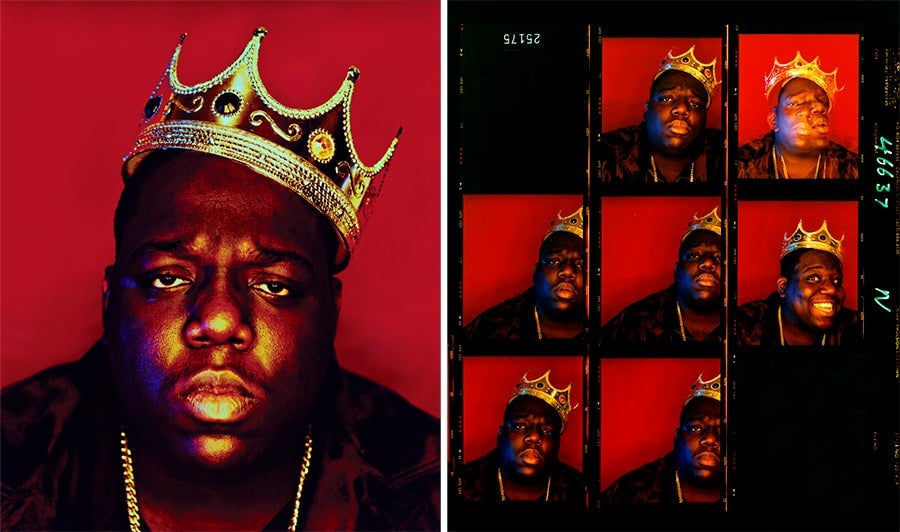
Ricky Powell‘s work is like a collage of candid moments with rising artists of the 1980s and 1990s. Spike Lee, Jean-Michel Basquiat, Eazy E, and the Beastie Boys (who even referenced him in a lyric) all appear in his sheet of slides, their names and the year of the image scrawled on the border.
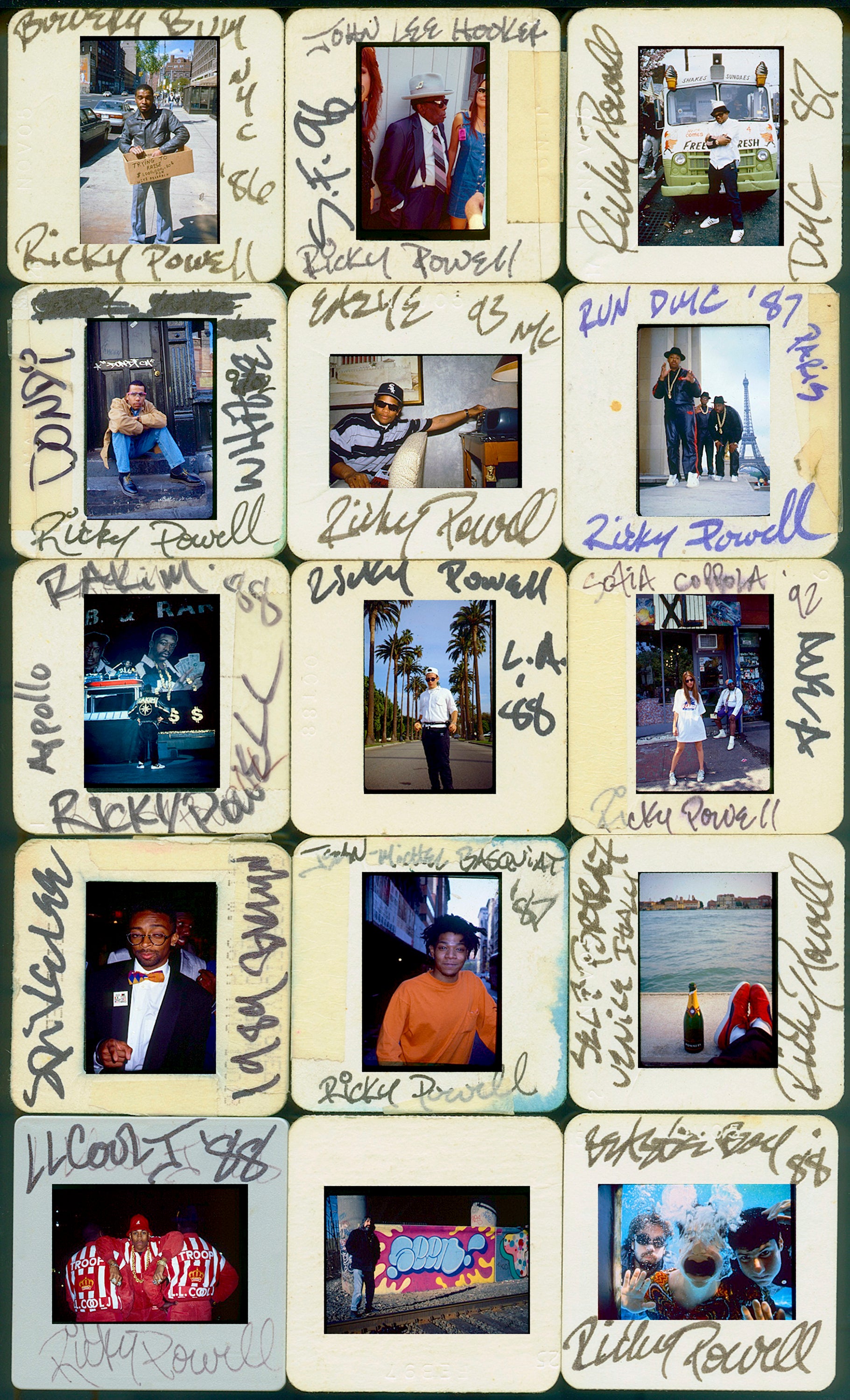
Jamel Shabazz’s work is a raw feed of the street culture of the 1980’s New York City that birthed hip-hop. Everyday people old and young, some stylish, some less so, take a moment out of their day to pose for his camera.
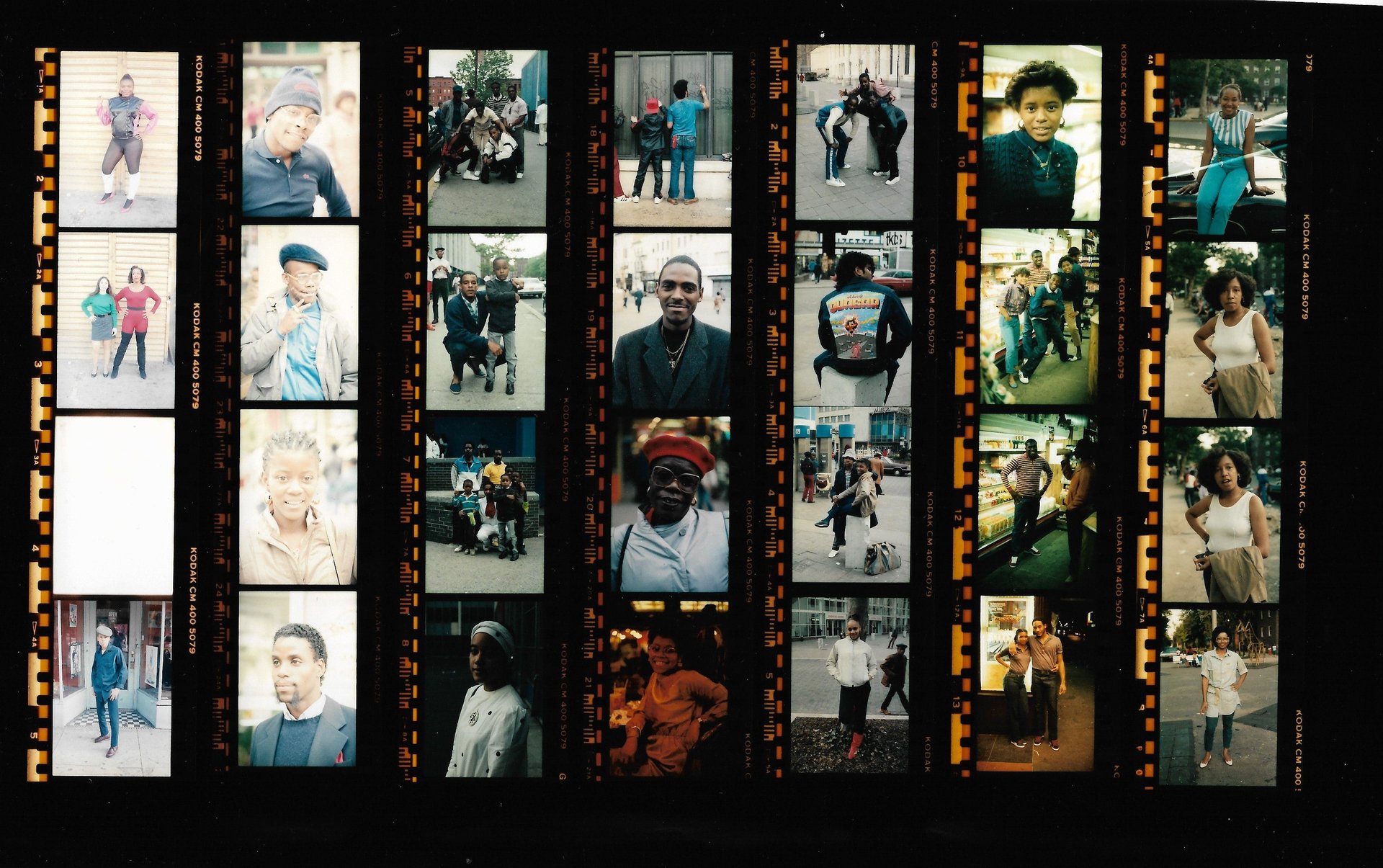
While many of the images come from the 80’s and 90’s, “Contact High” also includes some fly-on-the-studio-wall photos of a young Kendrick Lamar, taken in 2007 by Jorge Peniche—a longtime hip-hop photographer, and also a tour manager for the late rapper Nipsey Hussle.

Tobak noted that the film era’s happy accidents also resulted in some of its most transcendent images.
For example, she said Joe Conzo Jr.‘s ethereal “Popper” photo, of a backlit breakdancer at Manhattan’s Roseland Ballroom in 1980, was captured when Conzo’s flash misfired.
Some of these photos feel like artifacts of a time when media ran through a narrower funnel—when magazines and record labels ruled, and a single iconic image could define an artist in a young person’s imagination.
“The 80’s and 90’s were a time when photographers had greater access to musicians, coinciding with the dominance of music magazines and album cover and magazine cover art,” says Tobak. Today, on the other hand, a fan’s connection to an artist is constantly updated, via Instagram, Twitter, and Snapchat feeds.
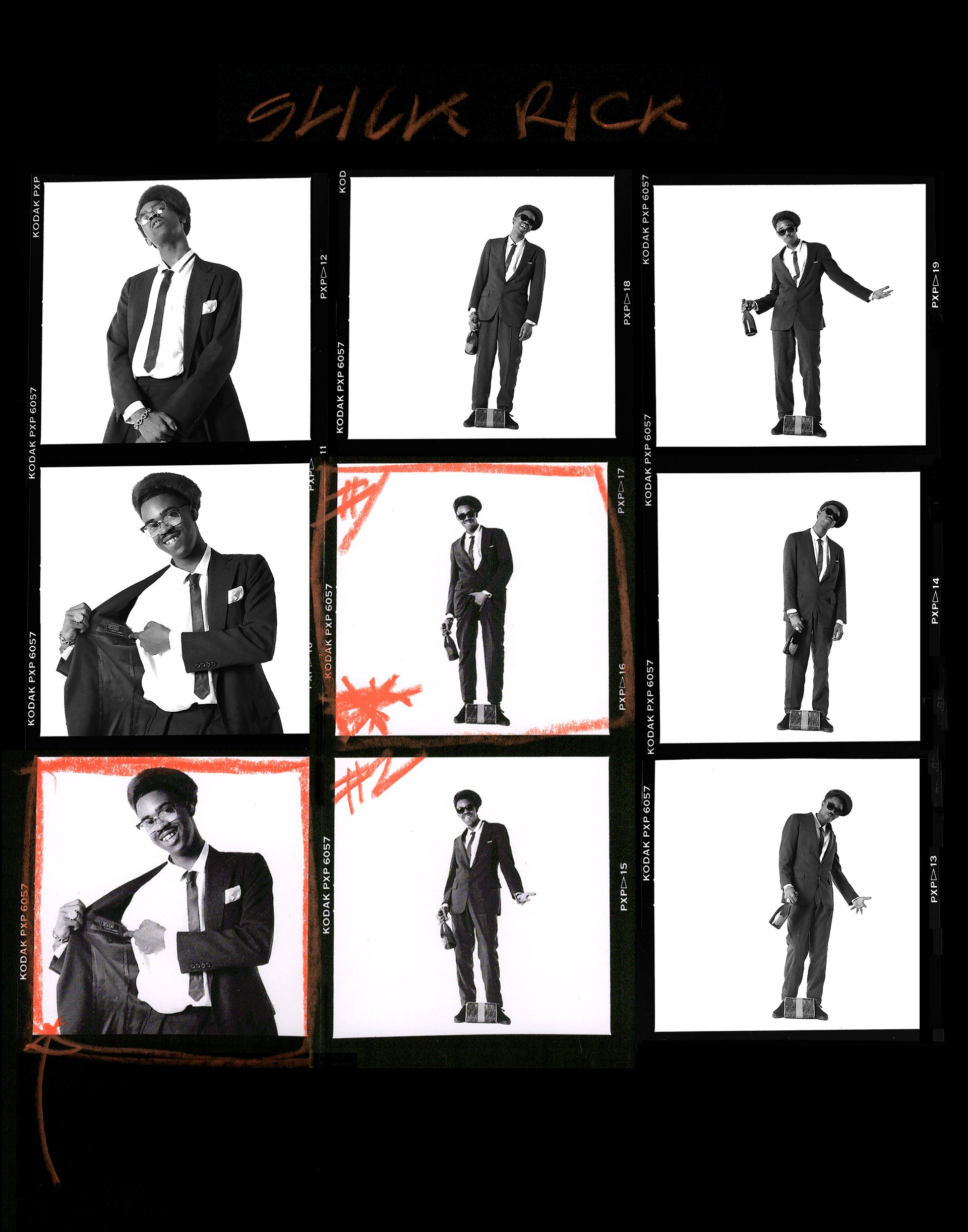
Ironically, those social feeds—often highly curated and filtered—somehow feel less intimate than many of the photos featured in “Contact High.” That’s because the dynamic between photographer and subject required real vulnerability on the subject’s part.
“You couldn’t just look into the camera and instantly see what had just been photographed moments earlier,” Tobak says. “Celebrating mistakes and the imperfect process is really important in this day and age, and I think the photographers in the book, and now the exhibition, recognize that.”
Hope your weekend has some perfectly imperfect moments!

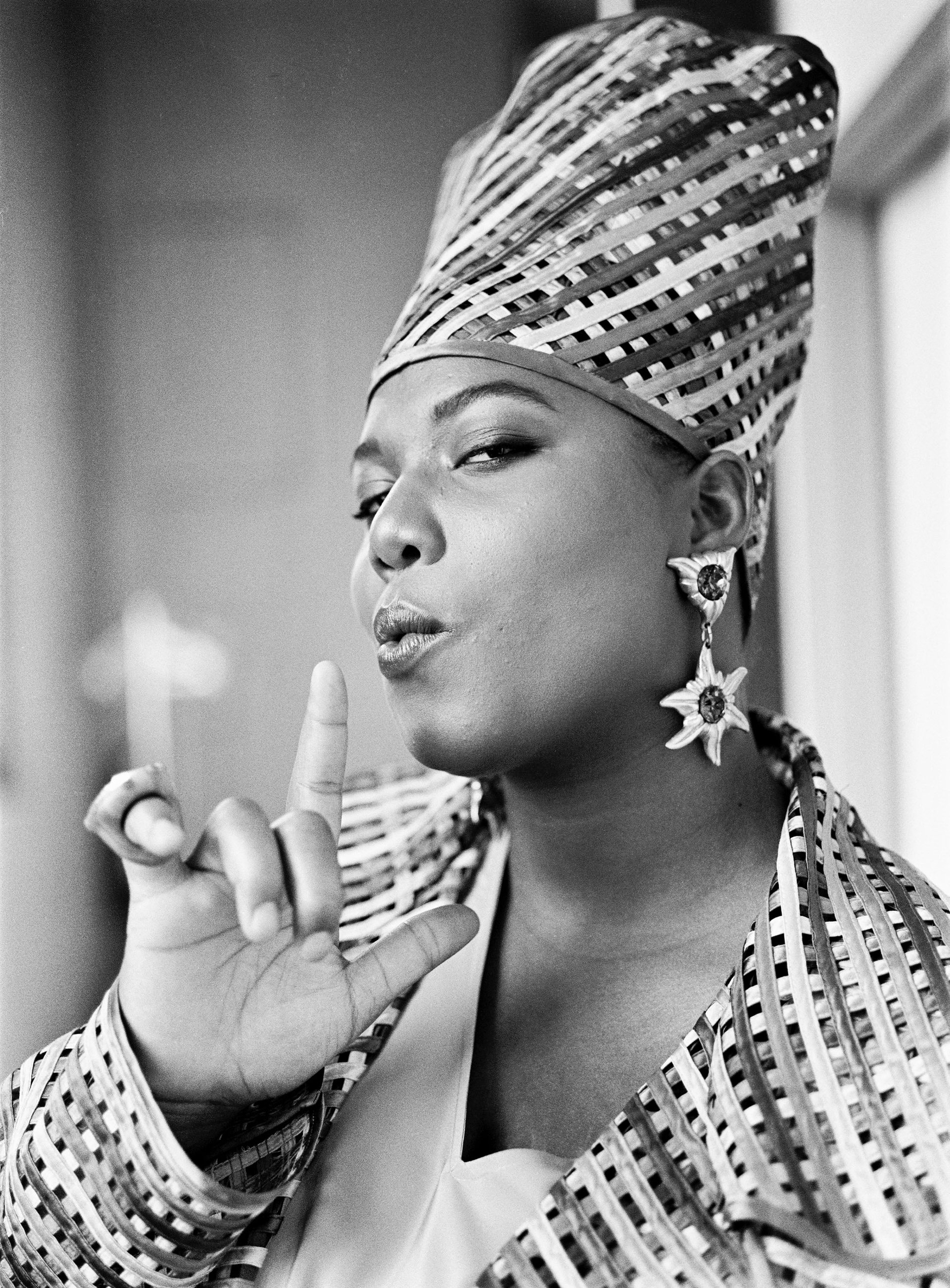
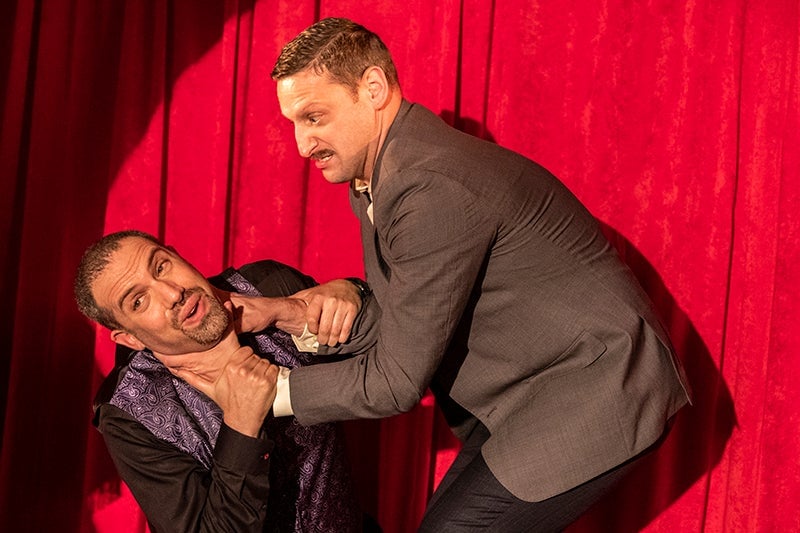
A “perfectly dumb and brilliantly panicked” fever dream of social anxiety. I have been tearing through Tim Robinson’s surreally insane Netflix sketch series I Think You Should Leave, which dropped this week. Robinson, who spent a short stint as a Saturday Night Live writer and cast member, and most recently starred in the Comedy Central series Detroiters, has distilled the panic and mania of life’s many screw-ups and indignities into an acid trip through a fun house. Robinson and a cadre of familiar faces including Will Forte, Cecily Strong, Vanessa Bayer, Sam Richardson, and even Fred Willard show up in sketches that are so heightened and inverted, you will leave a different sketch than the one you entered. With only 6 episodes, each clocking in around 15 minutes, this is a filthy, deranged, and absurd rollercoaster of a weekend binge.